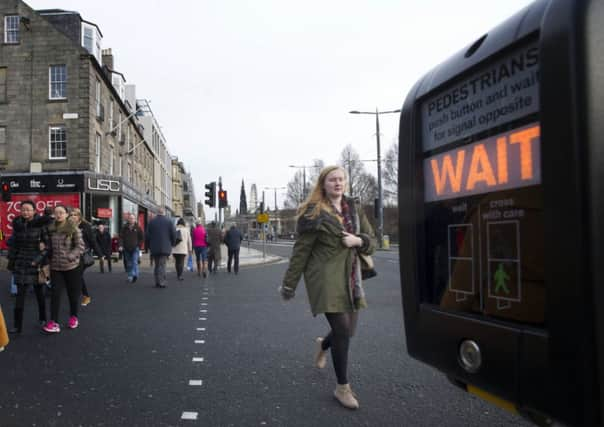Alastair Dalton: Pedestrians want more of the green man


It gives completely the wrong message to children learning road safety, and risks encouraging the potentially suicidal jaywalking for which parts of Scotland are notorious.
In some cities, walkers have to wait nearly two minutes for the green man so they can cross safely, which would test the patience of even the most law-abiding and risk-averse.
Advertisement
Hide AdAdvertisement
Hide AdThat doesn’t do motorists any favours either, as they are often forced to stop, fuming, at deserted traffic lights because the pedestrian has pushed the button, given up waiting, crossed the road and is long gone.
Even worse is the positively archaic practice at junctions, of traffic lights giving vehicles in each direction two green lights in a row between each green man.
Then there is how long people are given to cross. Pedestrian campaigner group Living Streets has highlighted that many crossing times have not changed since the 1950s, despite the population becoming older and less agile.
The green man is normally on for four seconds, then flashes for a further six seconds before traffic lights turn green.
However, this is based on an “assumed walking speed” of 1.2 metres/second, which is seen as too fast for the elderly, parents with pushchairs or people with sight or mobility problems to manage.
While Glasgow has some of the worst examples of this “car is king” prejudice, Scotland’s largest city has also pioneered one of the best pedestrian-friendly measures.
At the busy junction of Queen Street and Argyle Street – one of the main shopping thoroughfares – a countdown timer is linked to the traffic lights. This tells pedestrians how long they have to wait for the next green man, which is often less than 30 seconds.
In Edinburgh, council officials vividly illustrated the disparity between traffic and pedestrians when proposing traffic curbs in Princes Street 20 years ago. Tens of thousands of shoppers were shown corralled on narrow pavements while vehicles, carrying a fraction of that number, occupied carriageways many times as wide.
Advertisement
Hide AdAdvertisement
Hide AdIn some countries, jaywalking is illegal. That would probably come as an unenforceable culture shock if repeated in Scotland – and there are no serious calls for it. But better parity has to be reached between vehicles and pedestrians – and we could start with a little more green man.
FOLLOW US
SCOTSMAN TABLET AND MOBILE APPS